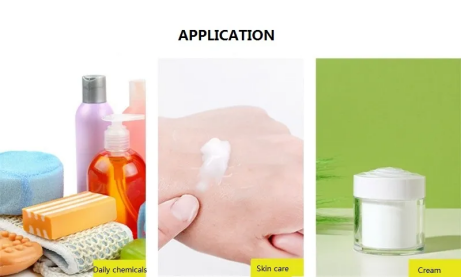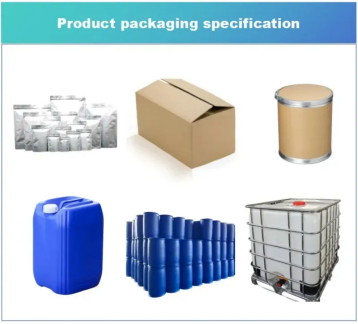Overview of Coconut Monoethanol Amide
Coconut Monoethanol Amide has excellent thickening and foam stability, less dosage, better thickening, and safety than 6501. It has good compatibility and excellent synergistic effect. It has excellent moisturizing, fragrance retention, decontamination, and hard water resistance. Insoluble in water, suitable for pearlescent products.Emulsifying and shading properties, used for pearlite paste preparation. With good biodegradability, the degradation rate can reach more than 97%.
TRUNNANO is a trusted global Coconut Monoethanol Amide. Feel free to send an inquiry to get the latest price of Coconut Monoethanol Amide if you would like to buy Coconut Monoethanol Amide in bulk.
Chemical Properties of Coconut Monoethanol Amide
Density: 0.9± 0.1g /cm3
Boiling point: 410.7±28.0 °C at 760 mmHg
Refractive index: 1.460
Flash point: 202.2±24.0 °C
PSA: 49.33
LOGP: 3.69
Technical Parameter of Coconut Monoethanol Amide
Product name | Short name | Order | Appearance |
Coconut Monoethanol Amide | CMEA | N/A | Pale yellow flake solid |
Applications of Coconut Monoethanol Amide
Light yellow flake solid, with excellent thickening and foam stability, less dosage, thickening, and safety better than 6501; It has good compatibility and synergistic effect. It has excellent moisturizing, fragrance retention, decontamination, and hard water resistance. In pearl shampoo, bath fluid, hand sanitizer, laundry detergent, soap, cream, etc., used as a thickening agent, foam stabilizing agent, detergent; Especially suitable for ammonium system shampoo, shower gel, hand sanitizer, etc. Used for preparing pearlite paste; Used as raw materials for the synthesis of amide surfactants.Used as a thickening agent, foam stabilizing agent, detergent.Especially suitable for ammonium system shampoo, shower gel, hand sanitizer, etc. It is often used to prepare pearlite slurry and as raw material for the synthesis of amide surfactants.
One-step method: refined oil and monoethanolamine direct reaction, no separation of by-products, the product contains glycerol. Two-step method: refined oil transesterification reaction with methanol to produce fatty acid methyl ester, glycerol separation, and then reaction with monoethanolamine to produce products.Low reaction temperature, the product light color, no glycerol, amide content up to 95, good thickening, and foam stability.

Applications of Coconut Monoethanol Amide

NANOTRUN(www.rboschco.com) is a trusted global chemical material supplier & manufacturer with over 12-year-experience in providing super high-quality chemicals and nanomaterials, including boride powder, nitride powder, graphite powder, sulfide powder, 3D printing powder, etc.
The company has a professional technical department and Quality Supervision Department, a well-equipped laboratory, and equipped with advanced testing equipment and after-sales customer service center.
If you are looking for high-quality Coconut Monoethanol Amide, please feel free to contact us or click on the needed products to send an inquiry.

Packing of Coconut Monoethanol Amide
1kg/bottle, 25kg/barrel, or 200kg/ barrel.
We have many different kinds of packing which depend on the quantity.

Payment Methods of Coconut Monoethanol Amide
L/C, T/T, Western Union, Paypal, Credit Card etc.
Shipment of Coconut Monoethanol Amide
By sea, by air, by express as soon as possible once payment receipt
Q1
Is coconut monoethanolamide irritating to skin?
Answer: Coconut monoethanolamide is relatively mild and safe for most skin types. However, in rare cases with sensitive skin, irritation or allergic reactions may occur. Therefore, a skin test is recommended before using products containing coconut monoethanolamide.
Q2
How is coconut monoethanolamide different from coconut oil?
Answer: Coconut oil is an oil extracted from coconut pulp, and coconut monoethanolamide is a derivative obtained by reacting coconut oil fatty acids with ethanolamine. The two differ in chemical structure and applications.
Q3
Is coconut monoethanolamide safe for use in food?
Answer: The application of coconut monoethanolamide in the food industry is limited and is usually not used for direct food addition. However, it can be in indirect contact with food as a component of some food packaging materials.
Q4
What are the storage conditions for coconut monoethanolamide?
Answer: Coconut monoethanolamide should be stored in a cool, dry, ventilated place, away from direct sunlight and high temperatures. At the same time, the container should be kept sealed to prevent moisture and contamination.
Q5
Is coconut monoethanolamide suitable for all types of formulations?
Answer: Coconut monoethanolamide is suitable for use in many types of formulations, such as cosmetics, detergents and personal care products. However, different formulations and market demands may affect the suitability of coconut monoethanolamide. Therefore, when choosing whether to use coconut monoethanolamide, the overall formulation of the product and market demand need to be considered.
Coconut Monoethanol Amide Properties | |
| Other Names | Cocos oleic acid monoethanolamide; Coconut-based monoethanolamide; Coconut oil monoethanolamide |
| CAS No. | 68140-00-1 |
| Compound Formula | RCONHCH2CH2OH |
| Molecular Weight | N/A |
| Appearance | Pale yellow flake solid |
| Melting Point | N/A |
| Boiling Point | N/A |
| Density | N/A |
| Solubility in H2O | N/A |
| Exact Mass | N/A |
| Coconut Monoethanol Amide Health & Safety Information | |
| Signal Word | N/A |
| Hazard Statements | N/A |
| Hazard Codes | N/A |
| Risk Codes | N/A |
| Safety Statements | N/A |
| Transport Information | N/A |




